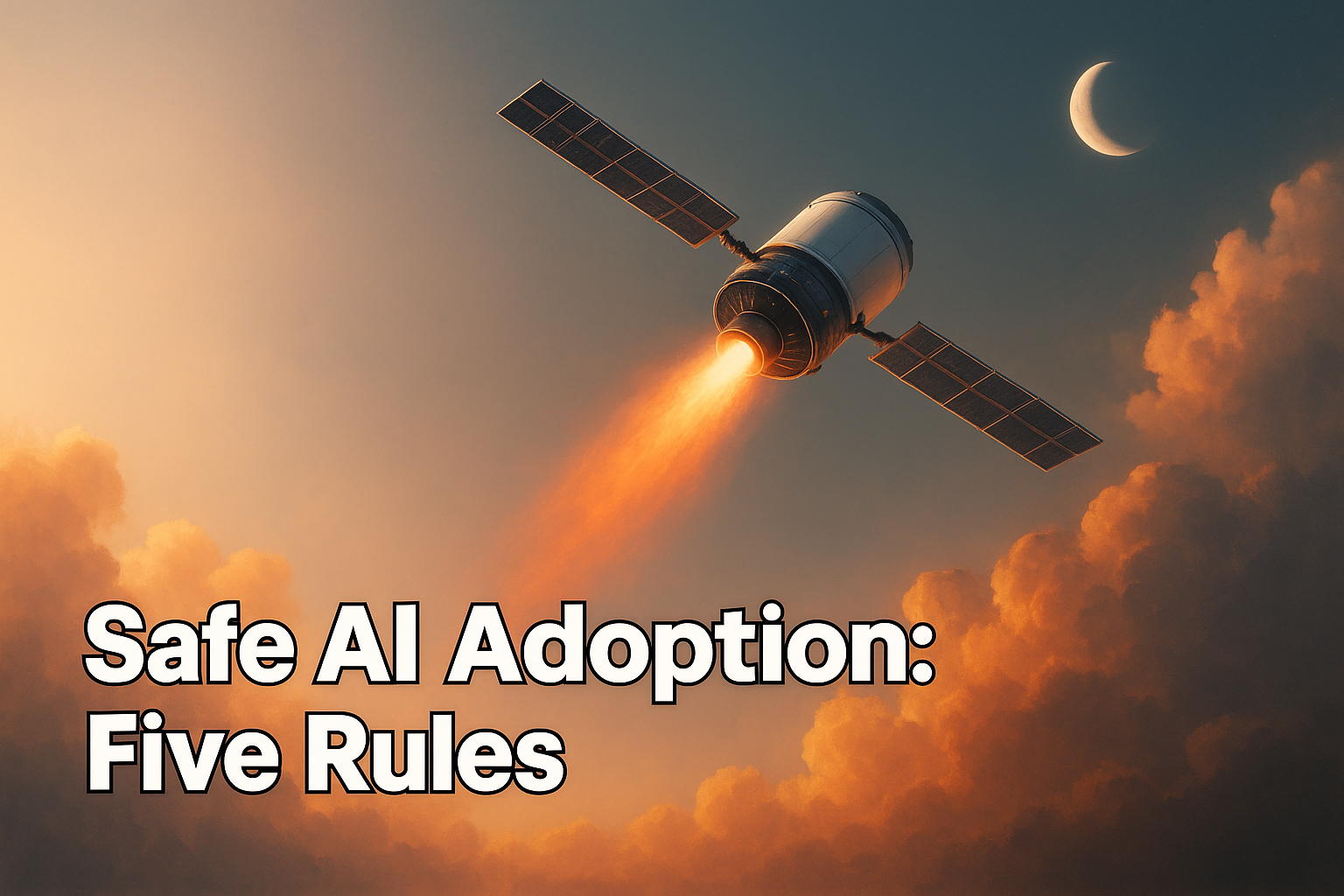I work with business owners who are excited about AI but nervous about the risks. That’s a smart place to be. AI can boost productivity, cut costs, and open new revenue streams—but only if you bring it in safely. Over the past few years, I’ve seen five rules consistently separate safe adopters from risky ones.

Rule 1: Know What AI You’re Using
You can’t secure what you don’t know exists. Many businesses run “shadow AI” without realizing it—an employee pastes client data into ChatGPT, or someone installs a plug-in that talks to customer records.
The first step is always an inventory. Map out every place AI is being used, from obvious tools like chatbots to background integrations inside CRMs or email platforms. Treat this as an ongoing process, not a one-time checklist.
Rule 2: Assess Risk in Context
Not all AI carries the same weight. A writing assistant for marketing copy isn’t in the same category as an AI tool making loan recommendations.
I classify each tool by:
- Data sensitivity: Does it handle personal, financial, or health information?
- Vendor reputation: Do they have a track record of responsible practices?
- Compliance: Are they aligned with SOC 2, ISO 27001, GDPR, or sector standards?
This makes risk visible, and it stops a harmless tool from being treated the same as one with major exposure.
Rule 3: Protect Data Like It’s on the Road
AI thrives on data, but you don’t need to give it everything. I treat sensitive data as if it’s riding in a car—it needs a seatbelt. That means policies plus technology:
- Restrict the types of data that can leave your environment.
- Mask or anonymize where possible.
- Use encryption and access controls.
Most AI mishaps happen because raw, sensitive data gets shared without guardrails.
Rule 4: Control Access With Policies
This is where Zero Trust principles apply. Never assume a new AI tool is safe until reviewed. I recommend:
- Approval workflows: Require a review before new AI tools touch company data.
- Least privilege: Give each user only the minimum access they need.
- Continuous monitoring: If a tool’s behavior changes, pause and reassess.
When Microsoft and others talk about secure AI adoption, this is front and center: access controls and governance are non-negotiable.
Rule 5: Monitor and Review Continuously
Safe once doesn’t mean safe forever. Vendors push updates, new models release, and risks evolve. I’ve seen tools that were compliant one month but out of alignment the next.
That’s why I recommend:
- Quarterly audits of all AI use.
- Ongoing monitoring of tool updates and vendor policies.
- Spot checks of outputs for bias, security, and accuracy.
The point is simple: AI adoption is not a project, it’s a practice.
Quick-Win Checklist
If you only have half an hour this week, do these five things:
- Write down every AI tool your team is using.
- Label each tool low, medium, or high risk.
- Lock down the highest-risk ones with clear rules.
- Set a reminder to review tool use once a month.
- Send one short message to your team about the rules for adopting new AI tools.
Final Takeaway
AI can be a huge advantage for small businesses, but only if you bring it in safely. Follow these five rules and you’ll avoid the most common pitfalls.
If you want a playbook tailored to your business, reach out. I help small businesses adopt AI and automation with confidence—no guesswork, no wasted time.
References
- The Hacker News — The 5 Golden Rules of Safe AI Adoption (2025). link
- Quisitive — Top 5 Ways to Prep Your Organization for Secure AI Adoption (2024). link
- Microsoft — Responsible AI Strategy in the Cloud Adoption Framework (2024). link
- Medium (Tom Croll) — Securing the AI-Powered Enterprise: Microsoft’s Best Practices (2024). link
- TechRadar Pro — The Four-Phase Security Approach for AI Transformation (2024). link
Have a question about this topic?
Send a note and we'll follow up within 1 business day.